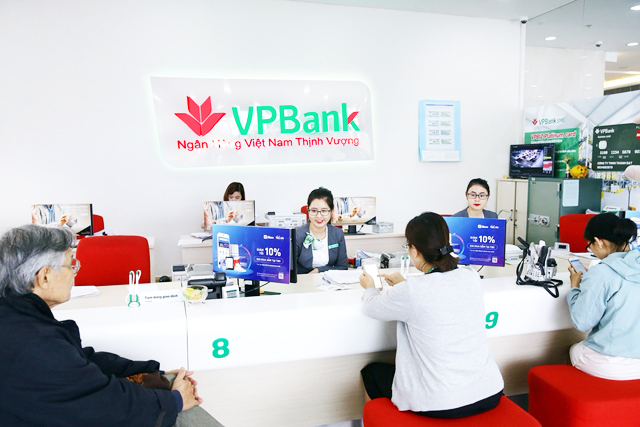
By Ly Ly Cao
HÀ NỘI — Working in the financial field, particularly the banking sector, is not only challenging, but also interesting for Vietnamese women as it affects many aspects of their personal lives as they pursue higher positions.
More and more women are taking part in banking work now since the businesses are growing stronger in Việt Nam and around the world.
Đặng Châu Giang, head of Small and Middle Enterprise (SME) Marketing and Customer Service Department at VPBank, said that many female employees work for banks now, and more and more are promoted to middle management as they tend to be more careful and have unique ideas.
“It provides decent jobs, decent incomes, and also an interesting experience. In this field, women are more careful and even more decisive,” Giang added.
Research on listed companies in Asia and China conducted by International Finance Corporation (IFC) showed that companies with at least 30 per cent of women on the board of directors see rates of return that are 2 percentage point higher than companies with all male boards.
“We know that diverse leadership teams make better decisions. Diverse teams have a better ability to assess risk and a stronger record of innovation, leading to better business results,” Amy N. Luinstra, Gender Lead in East Asia Pacific of IFC, said.
But not many get to senior positions and the board of directors. Women account for approximately 60 per cent of banks' entry-level workforce, and as they progress along the career ladder, women hold one-fifth of top executive positions.
“We face a lot of pressure. As entry-level employees, we have to finish our tasks on time. As managers, we have to reach business targets without violating internal regulations and creating conflicts,” Giang, who has 17 years of experience in banking and 11 years in management, said.
“In general, the workload is always high so it is normal for employees to go home at 7 – 8pm. Not to mention if you work in sales, you have to go out often to interact with customers.
“This makes things difficult for women, especially married women, as they can not spend time with their families.
“If they cannot manage to strike a balance between personal lives and work, they might struggle and it prevents them from reaching higher positions.”
The ‘leaky pipeline’ of women in leadership is hurting the banks, Luinstra said.
Another key factor influencing female workers’ ambitions in pursuing leadership roles is the working environment.
“If you work in organisations which are open to changes, new ideas and initiatives, you also have a mindset for changing and improving your value,” Giang said.
“Employees, especially women, who work in that environment are motivated to grow and strive for new challenges.
“And of course, female employees will have a feeling of being satisfied if they work in quiet and safe environment. They might easily be pleased with their current jobs and positions.”
This will be a challenge for both banks and women themselves, Luinstra noted.
“To find solutions and answers for these questions, IFC is co-operating with the State Bank of Việt Nam (SBV) to promote innovative, impactful initiatives to open doors for women into leadership positions in banks,” Luinstra said.
The partnership includes three phases. The first is to research the current status of women and men in banks, what barriers prevent more women from being in leadership and what are some promising practices among banks.
In the second phase, IFC and SBV will sponsor an awards programme to acknowledge individual high achieving women in banking as well as prominent banks working to promote gender equality in their hiring and promotion practices.
And the last phase is a peer learning platform that brings together private-sector banks to exchange knowledge on the best practices in talent development, leadership and succession planning, and creating more flexible and inclusive workplaces for women and men.
Gender diversity in leadership brings another advantage, Luinstra added.
“When there are more women in decision-making roles in finance, they tend to lend more to women-owned businesses, who are currently underserved by banks in Việt Nam," Luinstra said.
"This contributes to the growth of the economy as whole and is good for the bank. In emerging Asia, loans to women-owned SMEs had a 3.2 per cent non-performing loan (NPL) ratio compared to 4.5 per cent NPL for the SME segment.” — VNS
Xem thêm: lmth.egnellahc-gniticxe-na-pihsredael-gniknab-ni-nemow/772798/ymonoce/nv.swenmanteiv